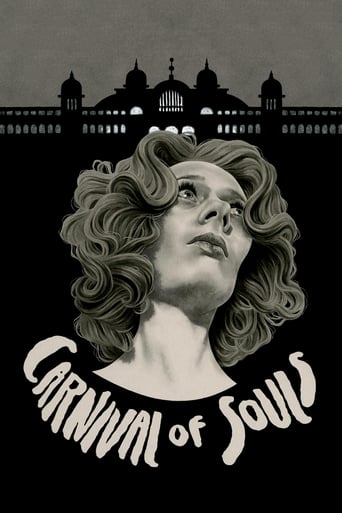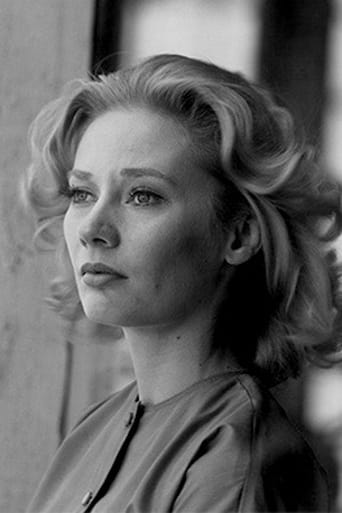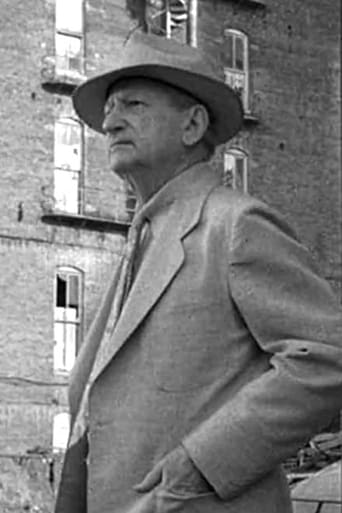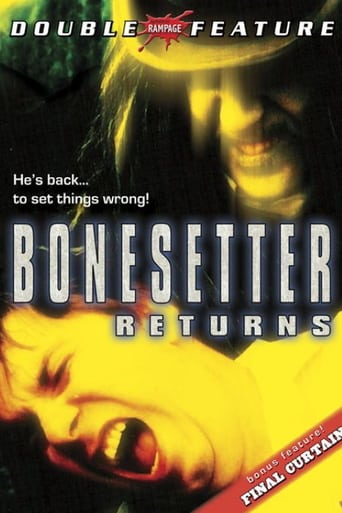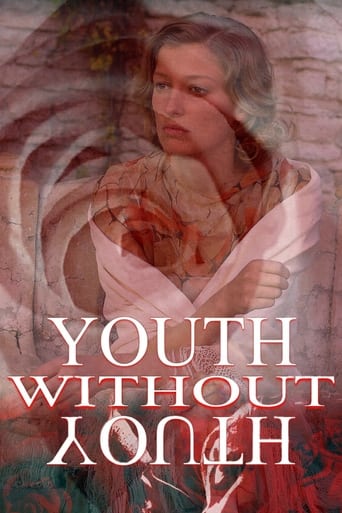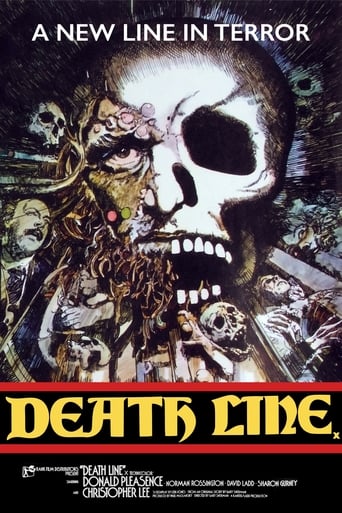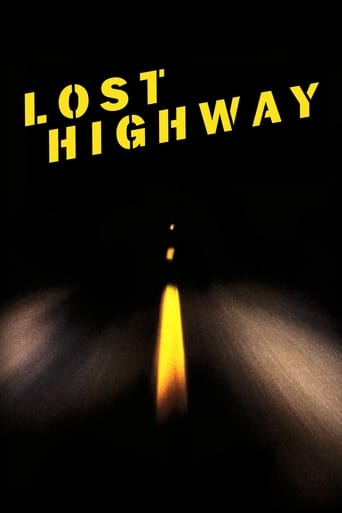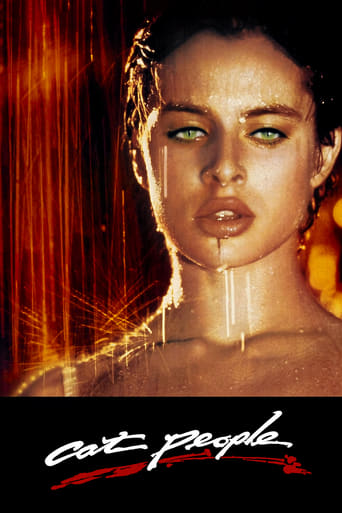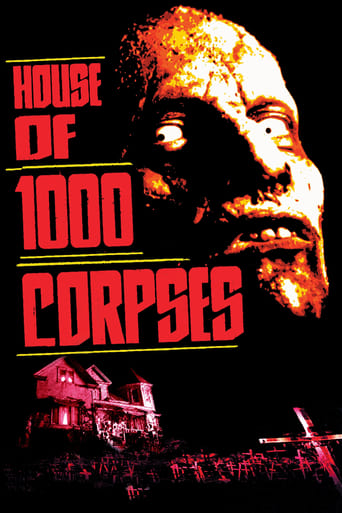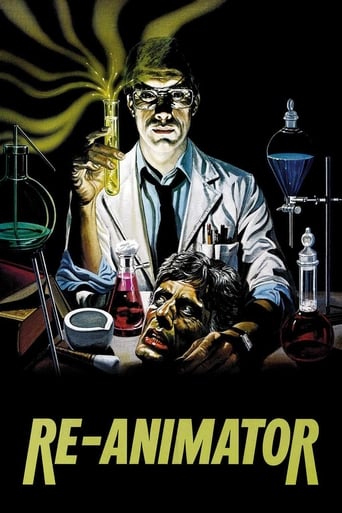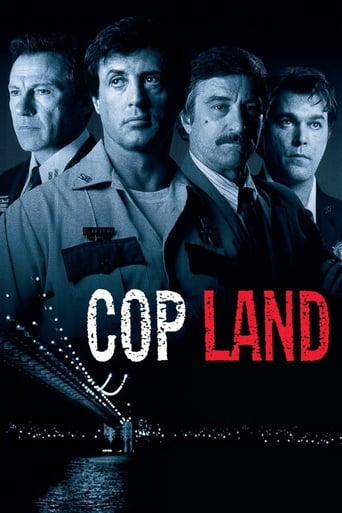Carnival of Souls (1962)
Mary Henry ends up the sole survivor of a fatal car accident through mysterious circumstances. Trying to put the incident behind her, she moves to Utah and takes a job as a church organist. But her fresh start is interrupted by visions of a fiendish man. As the visions begin to occur more frequently, Mary finds herself drawn to the deserted carnival on the outskirts of town. The strangely alluring carnival may hold the secret to her tragic past.
Watch Trailer
Cast


Similar titles
Reviews
This came as a big surprise. Either I had previously seen it some time ago in a terrible print or I had only seen the many evocative b/w stills. Whatever, the pristine and beautifully shot movie unwound before me, glowing in its Blu-ray presentation. It is not the fastest moving film in the world and the story is only slight but wondrous image after image appear while the remarkable Candace Hilligoss performs so convincingly, often with only herself on screen. It is a stunning performance in that she convinces us of something unspoken and it must be said unresolved. Her inter action with others is also surprisingly effective in that in most ultra low budget films that mix young and old there is usually some disconnect, whether deliberate or not in that it is clear that the more mature performers are in some way slumming it. Not here and the exchanges in the doctor's office are particularly strong. So, the acting is good, the locations eerie and effective and the organ music suitably worrying. The salt lake and church settings are contrasted with the lodging house and unusual shapes and textures the Candace encounters and overall a very unsettling atmosphere is achieved. An original and influential work thats effect lingers well beyond the modest running time.
Suspence is the key here. While some might think of this as a cheaply made Twilight Zone, it actually has more elements of Psycho, though not as shocking. The movie starts with a drag race sequence with 3 men in one car and 3 women in the other. The 2 cars race onto a dangerous bridge, and the car with the women tragically crashes off the bridge. It lands in muddy and murky water.While teams frantically search to find the car, suddenly Mary Henry (Candace Hilligoss) appears on shore, escaping from the car. She has no idea where the car or the other 2 girls are. Mary is a church organist, and she has been hired as an organist in another town. So she packs her suitcase and drives to her new town.There, she meets a nice land lady, the churches minister, an amorous neighbor, and a doctor who wants to help her. She keeps seeing creepy men and other souls who frighten her. In her new town, Mary while refusing offers for support from everybody, is strangely drawn to some abandoned buildings outside of town. Here is where she finds a Carnival of Souls.Dorothy Gale would be interested in this, the only movie ever filmed in "Centron Studios - 1621 W 9th Street, Lawrence, Kansas, USA". The film holds the viewer with all the strange happenings, and finally leads to an ending which makes sense, but yet is still kind of creepy. For a film with a Psycho sized budget, and much lesser known cast (most of the cast has done 5 roles or fewer in their career), this is pretty well done. The minister in the new town had the most well known small role in a movie called "Paper Moon." Worth a look for anyone looking for something totally different for 90 minutes.
Spoiler alert! If you haven't seen this film and don't want the end spoiled for you, don't read this review. I found it impossible to write a review for this film without spoiling the ending.I am surprised by the number of reviewers who totally ignored the ending, which, for me, revealed all that had transpired before it. In my view, Mary had reached the point where life meets death. In our "living" time, the action following the accident on the bridge was perhaps 60 or 70 minutes, but for Mary, who had reached the point where life meets death, it could have been an instant or an eternity as there is no similar dimension of time during or after death. As she was a victim of drowning, the haunted Saltair Pavilion on Salt Lake was significant to her watery end, as were the "souls" who appeared from the water and from unknown, undefined realms beyond the living.For me, all that transpired after the accident occurred in a state of near death or after death. In her transition from life to death, Mary traveled through different phases, including alternating periods when she was totally and physically disconnected from the world that we know while we are alive. Even the boarding house in Salt Lake City was a kind of a death state. Mrs. Thompson, the landlady, was nice enough and even reminded me of Beryl Mercer, who played Jimmy Cagney's sweet mom in "The Public Enemy", but the house and its atmosphere was strangely quiet and lifeless. John Linden, the sleazy neighbor, seemed like death warmed over too. Even before the accident, Mary seemed totally disconnected from her teenage companions in the car. What was she doing with them? She seemed older, more mature, and totally out of place sitting with them during the drag race. Even in life, Mary was isolated from the world around her at least to some degree."I'm never coming back," she snapped coldly to her boss at the Kansas organ company, and she meant it because she was already dead. "You cannot live in isolation from the human race, you know," warns her new boss at the church in Utah, but Mary was already dead by then, so his words meant nothing to her. During the life-to-death transition or after death, nothing meant much to her except for the shocking images of the ghouls, who were either already dead or in a state of transition, and the haunting presence of the eerie Saltair Pavilion, which was as isolated from the world and as absent of life as Mary was during her life-to-death transition, and then, finally, after death. When she was recovered in the submerged car at the end, was Mary not dead?The entire atmosphere of this movie, including the haunting organ music and the creepy ghoul appearances, was extremely effective in conveying a sense of what it must be like to transition from life to death. In this portrayal of such a transition, the journey occurred in different stages, some of which repeated, such as the incidents when Mary was totally removed from the physical world as we know it in the department store and at the bus station. Gradually, more and more souls, who are already a part of the world of the dead, appear before her. Since Mary is either dying or already dead, she never travels to Salt Lake City and to the Saltair Pavilion in the world of the living, only in the world of life-to-death transition and, finally, of death itself. When I view this movie, I feel as though I have entered a terrifying, mysterious world that exists beyond the life that we know. I am experiencing a vision of the world that could possibly exist as we leave this life. It is a very unique and unforgettable adventure. I think that the writer, John Clifford, and the director, Herk Harvey, were brilliant for what they attempted to accomplish and for what they succeeded in achieving on such a tiny budget, and I loved Candace Hilligoss as poor, tormented Mary, may she finally rest in peace.
Aloof and fiercely independent young lass Mary Henry (well played with icy resolve by beautiful blonde Candace Hilligoss) survives a traumatic car accident. Mary accepts a new job as a church organist. However, Mary finds herself more and more detached from the world around her as she succumbs to the odd allure of an old abandoned lakeside pavilion.Director Herk Harvey relates the absorbing story at a hypnotically deliberate pace, grounds the fantastic premise in a thoroughly plausible workaday reality, does a masterful job of crafting and sustaining a supremely spooky ooga-booga gloom-doom atmosphere rife with dread and foreboding, makes excellent use of the rundown main fairground location, and pulls out all the chilling stops for the gloriously macabre climax. John Clifford's intriguing and enigmatic script astutely explores interesting issues pertaining to faith, life, mortality, and alienation. While Hilligoss carries the picture with her mesmerizing portrayal of the increasingly distraught, disconnected, and isolated Mary, she nonetheless receives sound support from Sidney Berger as smarmy and lecherous neighbor John Linden, Frances Feist as perky land lady Mrs. Thomas, Art Ellison as a hearty minister, and Stan Levitt as the compassionate Dr. Samuels. Harvey proves to be genuinely unnerving as the pasty-faced ghoul who constantly haunts and torments Mary. Kudos are also in order for Gene Moore's shivery pipe organ score and Maurice Prather's sumptuous black and white cinematography. Totally worthy of its sterling cult status.

